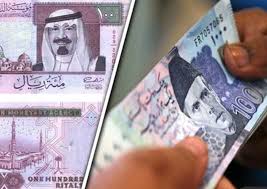
Riyal to PKR
The exchange rate between the Saudi Riyal (SAR) and the Pakistani Rupee (PKR) is a crucial factor influencing bilateral trade, remittance flows, and economic interactions between Saudi Arabia and Pakistan. This article explores the dynamics of the Riyal to PKR exchange rate, its significance, the factors affecting it, and the impact on both economies.
Understanding the Exchange Rate
The exchange rate specifies how much one currency, in this case, the Saudi Riyal, is worth in terms of the Pakistani Rupee. It fluctuates daily based on market forces such as supply and demand dynamics, geopolitical events, economic indicators, and central bank policies of both countries. For individuals and businesses engaged in transactions between Saudi Arabia and Pakistan, monitoring the Riyal to PKR exchange rate is crucial for budgeting, pricing goods and services, and determining the value of remittances.
Factors Influencing the Riyal to PKR Exchange Rate
Several factors contribute to the fluctuation of the Riyal to PKR exchange rate:
- Economic Indicators: Key economic indicators such as GDP growth, inflation rates, trade balances, and employment levels in both Saudi Arabia and Pakistan influence investor confidence and thereby affect the demand for each currency.
- Interest Rates: Central bank policies, including changes in interest rates by the Saudi Arabian Monetary Authority (SAMA) and the State Bank of Pakistan (SBP), impact the attractiveness of holding Riyals or Rupees for investors seeking higher yields.
- Political Stability and Geopolitical Events: Political stability in both countries and geopolitical developments in the region can lead to fluctuations in the exchange rate as they affect investor sentiment and confidence in the respective currencies.
- Oil Prices: Saudi Arabia’s economy is heavily reliant on oil exports. Fluctuations in global oil prices can impact Saudi Arabia’s fiscal health and consequently influence the Riyal’s value against other currencies, including the Pakistani Rupee.
- Remittance Flows: The flow of remittances from Pakistani expatriates working in Saudi Arabia back to Pakistan significantly impacts the demand for PKR. Higher remittance inflows tend to strengthen the PKR against the SAR, while lower inflows or repatriation of funds from Pakistan to Saudi Arabia can weaken it.
Impact on Economies
The exchange rate between the Riyal and PKR has profound implications for both Saudi Arabia and Pakistan:
- Trade and Investment: A favorable exchange rate can boost bilateral trade and investment between the two countries by making imports cheaper for one and exports more competitive for the other.
- Remittances: Pakistan is one of the largest recipients of remittances globally, with a significant portion originating from Saudi Arabia. Fluctuations in the Riyal to PKR exchange rate directly affect the value of remittances received by Pakistani families, impacting household incomes and consumption patterns.
- Inflation: Exchange rate movements can influence inflation rates in both countries, especially in Pakistan, where imported goods priced in Riyals become more or less expensive depending on the exchange rate.
- Foreign Reserves: The State Bank of Pakistan closely monitors and manages foreign exchange reserves to stabilize the PKR against major currencies, including the SAR, ensuring economic stability and financial resilience.
Exchange Rate Trends and Forecast
Over the years, the Riyal to PKR exchange rate has shown fluctuations influenced by global economic conditions and domestic factors. Historically, the exchange rate has ranged from approximately 22 PKR to 30 PKR per Saudi Riyal. Forecasting future exchange rate movements involves considering economic data, geopolitical developments, and market sentiment, which collectively shape investor expectations.
Conclusion
The Riyal to PKR exchange rate plays a pivotal role in shaping economic interactions between Saudi Arabia and Pakistan, impacting trade, investment, remittance flows, and inflation rates. Monitoring exchange rate trends and understanding the factors influencing them are essential for businesses, investors, and individuals engaged in cross-border transactions between these two countries. As both economies continue to evolve, maintaining stable exchange rate dynamics fosters economic cooperation and strengthens bilateral relations, benefiting the prosperity of both nations.



